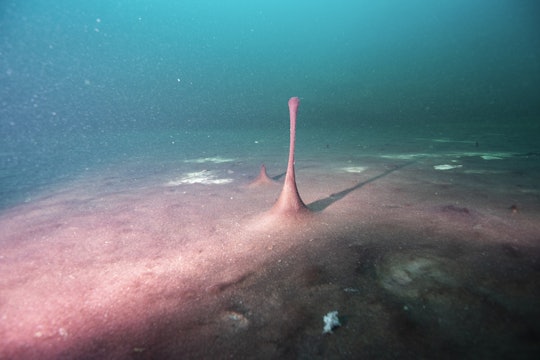
Phil Hartmeyer, NOAA Thunder Bay National Marine Sanctuary
On faster spinning planets, life could be hiding out under the atmosphere
Astrobiologists search for molecular oxygen as an indicator of life on other planets, but finding them isn't that straightforward
To find life on other planets, astronomers are on the hunt for biological signatures. They point their telescopes to exoplanets, planets that orbit around stars different than our Sun, and look for gases on those planets' atmospheres that are only produced by life. One important biosignature is molecular oxygen (O2). Organisms are the primary source of oxygen on Earth. Oxygen is also important for habitability, as the large amount of energy locked up in oxygen enabled the evolution of complex, multicellular life on Earth.
However, finding oxygen on an exoplanet is not a smoking gun for extraterrestrial life. Computer simulations have suggested that lifeless planets can also have oxygen-rich atmospheres, so an oxygen-rich atmosphere can be a false-positive for extraterrestrial life. Earth's natural history also cautions that the absence of oxygen may not necessarily indicate that an exoplanet is a lifeless rock. Cyanobacteria, the first oxygen producers on Earth, and oxygen consuming metabolisms in other bacteria evolved before oxygen accumulated in Earth's atmosphere. In fact, oxygen was only present in high enough concentrations to be detectable with telescopes for the last 10 percent of Earth's history.
Scientists often use observations about Earth systems to predict how life and exoplanet atmospheres may interact and co-evolve. They try to understand why and how oxygen levels go up or down and, by looking back at the history of Earth's atmospheric oxygen content, learn about about the processes that might allow oxygen to accumulate on other planets. It is still not completely clear why Earth's atmosphere is rich in oxygen, but a new study involving some of the modern Earth's most unique environments suggests that our present day oxygen-rich environment is the result of increasing daylength on Earth over geologic time.
The study, conducted by a team led by Gregory J. Dick at the University of Michigan and Judith M. Klatt at the Max Planck Institute for Marine Microbiology, suggests that atmospheric oxygen concentrations on Earth have increased because Earth's days have been getting longer. The longer days are what allowed oxygen produced during photosynthesis to finally accumulate in the atmosphere. Therefore, photosynthetic life may be present on quickly rotating exoplanets without detectable levels of oxygen in their atmospheres.
In fact, oxygen-producing life may be hidden by oxygen-free atmospheres more often than scientists had previously recognized.
Atmospheric oxygen concentrations on Earth have changed incrementally over Earth's natural history. Initially, Earth's atmosphere was essentially devoid of oxygen. Then, oxygen concentrations suddenly (at least on geologic timescales) increased to about 0.1 percent of present-day levels around 2.4 to 2.1 billion years ago during an event referred to as "the Great Oxidation Event," or the GOE. Atmospheric oxygen later reached modern levels after two additional oxidation events around 800 and 400 million years ago.
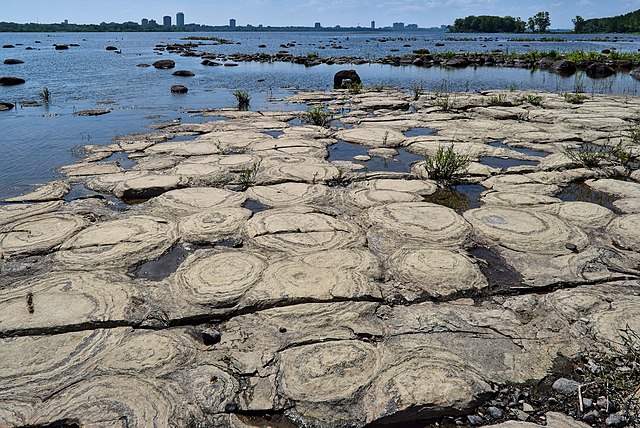
The Gatineau stromatolites along the Ottawa River in Canada are the fossilized remains of ancient oxygen-producing microbial mats
Via Wikimedia
Scientists still do not agree about what caused the incremental increase in the amount of oxygen in Earth's atmosphere over geologic time. One thing is certain: The evolution of oxygen-producing photosynthesis predates the Great Oxidation Event, so other planetary controls were likely driving the changes in Earth's oxygen content. There are several ideas as to what these processes might be, such as changes in volcanism or increased competitive success of cyanobacteria. Until now, nobody had considered how Earth's day length could have influenced atmospheric oxygen levels.
Thanks to tides caused by the Moon, Earth's days are have been getting longer. The gravitational pull of the Moon causes the Earth to bulge out on the sides closest and furthest away from the Moon. Scientists refer to this stretching of the Earth as the tidal bulge. The location of the Earth that experiences the tidal bulge changes as the Earth spins on its axis, which causes the periodic change in water level with high and low tide that beach visitors are familiar with.
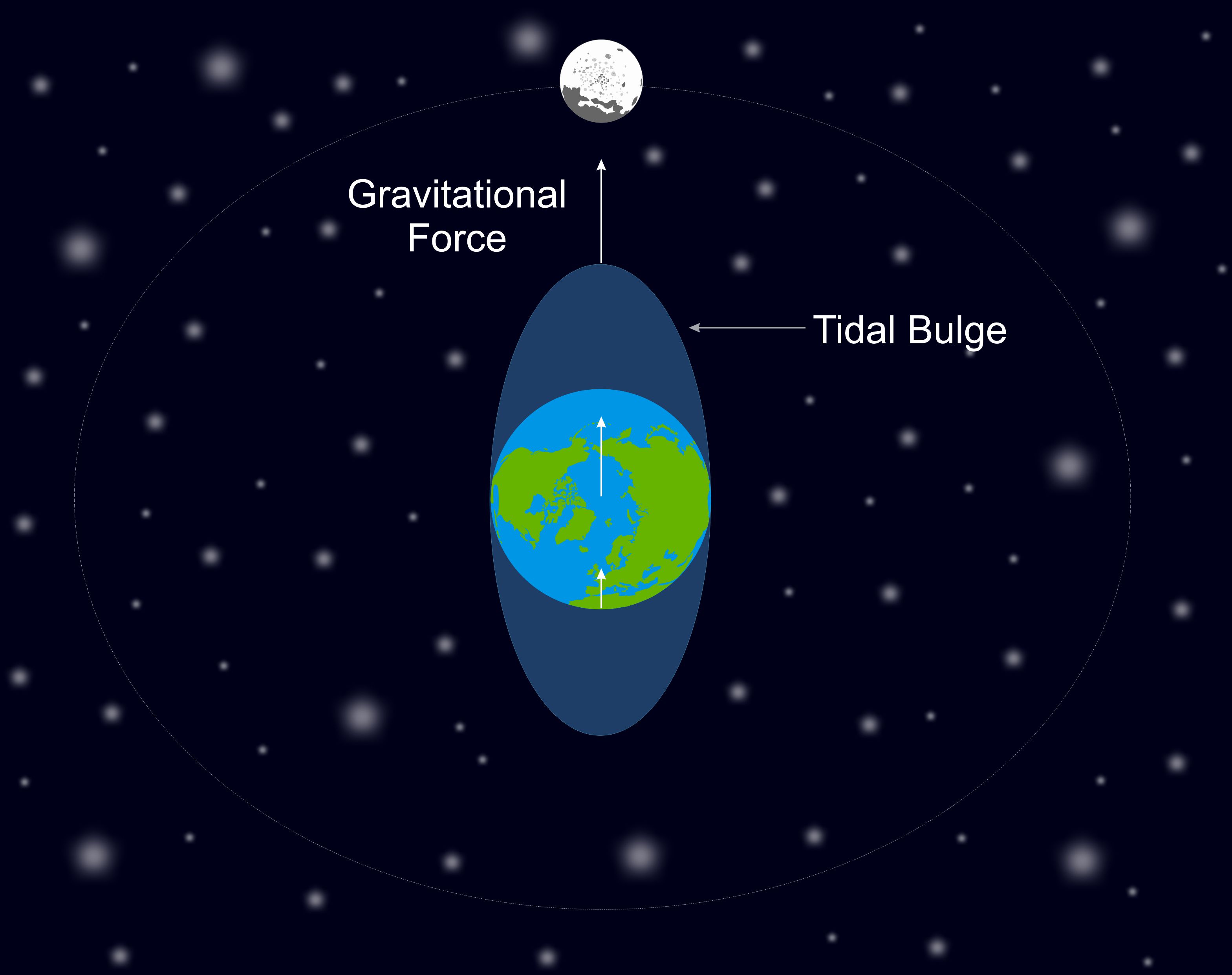
The gravitational force exerted on Earth by the Moon is strongest on the side closest to the Moon (depicted with arrow lengths). This stretches the Earth’s surface, creating a tidal bulge at the sides of the Earth closest and furthest from the Moon
Derek Smith
However, friction delays the tidal bulge, and since the Earth rotates faster than the Moon revolves around the Earth, the tidal bulge occurs ahead of the Moon. (This corresponds to the viewpoint of an observer on Earth, as the tide occurs after the Moon passes overhead). However, the Moon's gravity is simultaneously trying to align the tidal bulge with the Moon. This force exerts a torque that slows down the rotation rate of Earth, thereby lengthening a day. The effect of tidal friction is small, but additive; a day on Earth may have only been between five to seven hours long over four billion years ago.
The authors of the study hypothesized that the shorter illumination periods for photosynthesis caused by the shorter days on the early Earth would have effected oxygen export from ancient cyanobacteria, which likely grew in microbial mats, or tangled masses of microbes that carpeted lake beds and perhaps land. To test this hypothesis, the scientists built a computer model that simulates net oxygen export — the difference between oxygen produced by photosynthesis and consumed by respiration — assuming different lengths of days.
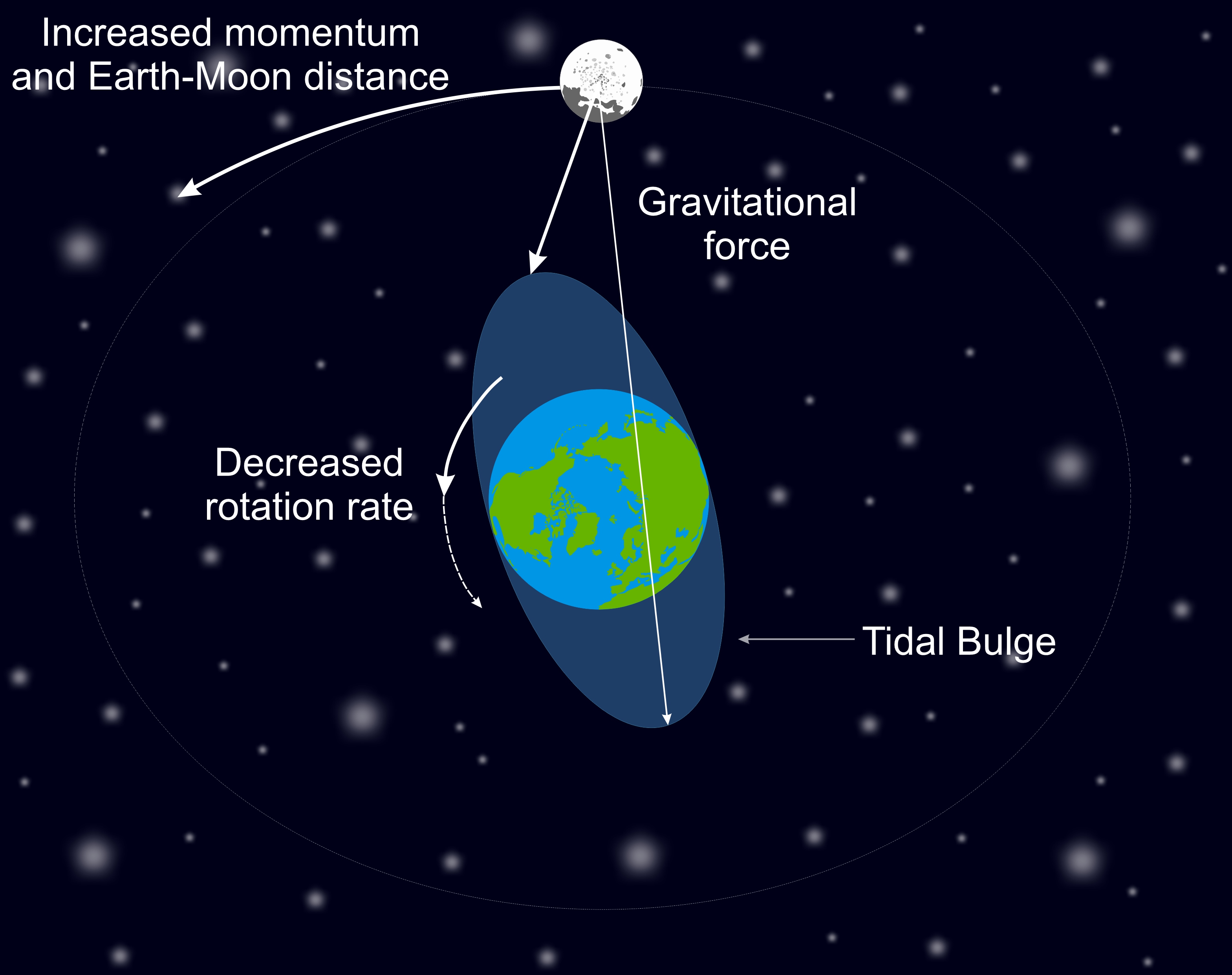
Because the tidal bulge is delayed by friction, and a day is shorter than a month, the tidal bulge is positioned ahead of the Moon. This creates a torque that increases the Moon’s momentum and decreases the rate of Earth’s rotation, thus making days increasingly longer
Derek Smith
The model revealed that when days are longer, oxygen-producing microbial mats export more oxygen to the atmosphere. Diffusion, the natural tendency of molecules to move from areas of high concentration to low concentration, was the key factor. On longer days, cyanobacteria spend more time in the sun, and there is more time for oxygen to accumulate at high concentrations, which increases diffusive export of oxygen from the mat. The increased diffusion allows more oxygen to escape respiration from other microbes, bubble out of the microbial mats, and reach the atmosphere.
When the research team used existing estimates of how Earth's daylength has changed over time in their model, they found that the modeled oxygen concentrations in the atmosphere were similar to the geological record of atmospheric oxygen levels.
While their calculations were promising, the team wanted to prove that their model reflected a real link between between daylength and atmospheric oxygen levels. To test this idea, they needed an environment similar to those that harbored microbial mats on the ancient Earth. They found such conditions off the coast of Michigan, at the bottom of Lake Huron in the Middle Island Sinkhole.
The carbonate bedrock at the floor of Lake Huron has dissolved overtime, yielding numerous sinkholes and caves throughout the basin. There, the groundwater is depleted in oxygen but rich in sulfates and other dissolved salts. This dense, sulfurous groundwater persistently vents onto the surrounding lake bottom and accumulates in sinkholes like the Middle Island Sinkhole. This unique environment supports extensive, otherworldly mats of purple cyanobacteria that are thought to resemble those present on ancient Earth.
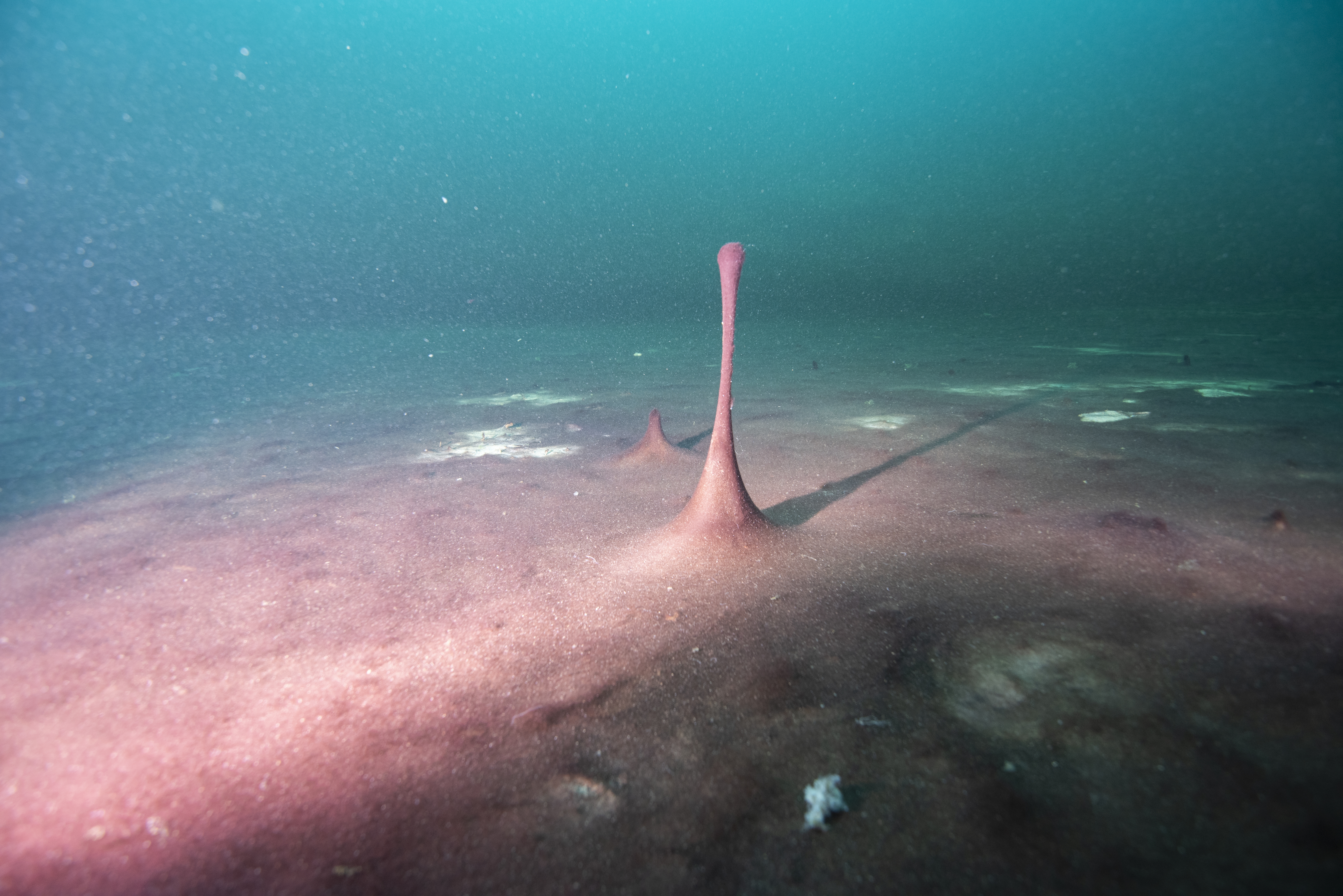
Mats of purple cyanobacteria carpet the floor of the Middle Island Sinkhole off the coast of Alpena, Michigan. When gas accumulates underneath the bacterial filaments, it can lift up the mat forming the “finger” structures shown here
Phil Hartmeyer, NOAA Thunder Bay National Marine Sanctuary
Klatt, Dick, and their colleagues collected sections of these purple cyanobacteria mats and measured the amount of oxygen that the mats produced when exposed to simulated daylight of varying length. The bacterial mats only released oxygen when the simulated daylengths were 16 hours or more, roughly the daylength on Earth at the time of the GOE. Their result was a sign that daylength may have been an important threshold for the oxygen content of Earth's atmosphere.
Looking beyond our solar system, exoplanet researchers have daylength estimates for just a few of the exoplanets cataloged to date. While exoplanet daylength has been previously considered with regard to its impact on climate and habitability, this study now suggests that astrobiologists should not assume that planets without oxygen lack life that makes and uses oxygen.
Prior to this study, Earth scientists thought that oxygen-rich atmospheres were an inevitable feature of a planet harboring oxygen-producing organisms. However, this new study provides evidence to the contrary: Oxygen-producing life may only release oxygen to the atmosphere of exoplanets in sufficient amounts to be detectable from Earth on more slowly rotating planets with longer days.
According to geoscientist Lewis Alcott, the author of the previous models, the new research shows "that the length of day increases over time (for an planet similar to the Earth’s conditions with a Moon, etc.), so this increase in length of day is an inevitable feature which would eventually lead to oxygenation." On other planets with different planet-moon interactions, an oxygen-rich atmosphere may be less of a given. Future study is required to further investigate that possibility. However, Alcott noted that the new research suggests that "a planet with a short day length could potentially 'hide' the identification of worlds which have oxygen producing organisms on them." Because of this, exoplanet daylength ought to be considered when interpreting biosignature data on alien worlds in galaxies far, far away.
